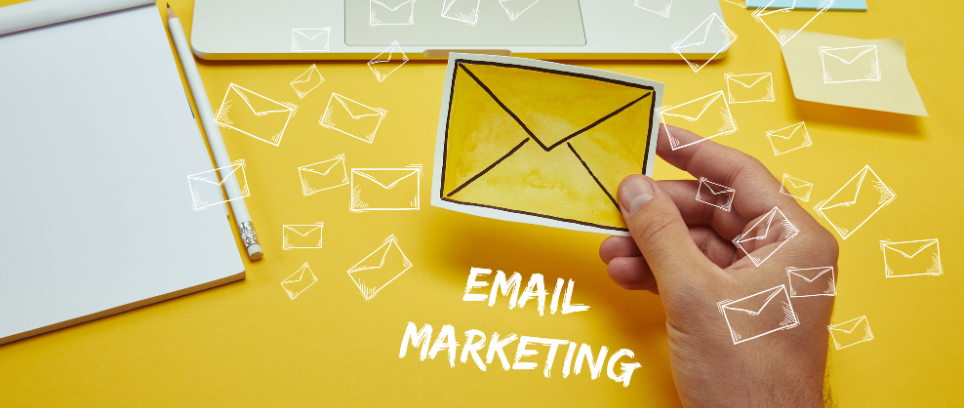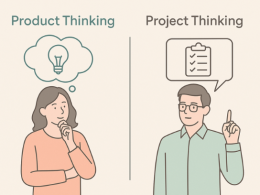In the ever-evolving landscape of digital marketing, where new strategies and platforms seem to emerge daily, one old-school method remains a tried-and-true champion: email marketing.
It’s the unsung hero of the digital world, consistently delivering impressive return on investment (ROI) when executed effectively. But here’s the million-dollar question: How do you ensure that your emails don’t end up in the dreaded “spam” folder and, more importantly, that they nurture leads and drive conversions?
Are you ready to unveil the secrets of email marketing that not only captivate your audience but also transform casual subscribers into loyal customers?
How to Master Email Marketing for Lead Nurturing and Conversions?
In this comprehensive guide, we’re about to embark on a journey deep into the world of email marketing. We’ll reveal proven strategies, share practical tips, and delve into impactful tactics that will not only grab your audience’s attention but also guide them toward taking the desired actions.
By the time you’ve finished reading, you‘ll be well-equipped to elevate your email marketing game and witness your conversion rates skyrocket.
🔍 So, how do you ensure your emails stand out in a crowded inbox?
🎯 How can you craft emails that not only inform but also inspire action?
💡 What are the secrets to building an engaged and responsive email list?
🌐 How do you design emails that look fantastic on both desktop and mobile devices?
🤖 What role does automation play in lead nurturing, and how can you use it effectively?
📈 And, most importantly, how do you measure and optimize your email campaigns for maximum impact?
Hold on to your keyboards, because the answers to these questions and more are just a scroll away. Let’s dive into the fascinating realm of email marketing, where innovation meets the timeless art of communication.
The Power of Email Marketing: Why It Matters
In the fast-paced, ever-evolving world of digital marketing, where new trends and technologies emerge like shooting stars, there exists an unsung hero that continues to shine brightly: email marketing.
Before we dive into the specifics of mastering email marketing, it’s crucial to understand why this channel remains pivotal in the digital marketing landscape. Let’s unravel the reasons behind the enduring relevance and significance of email marketing.
1. Unparalleled Reach
One of the most striking attributes of email marketing is its unparalleled reach. Did you know that there are over 4 billion email users worldwide? To put that in perspective, it’s more than half of the global population.
This staggering number makes email one of the most widely used communication channels on the planet. Whether you’re targeting consumers, businesses, or niche markets, email provides a direct line to an enormous and diverse audience.
2. Conversion Potential
Email marketing is often hailed for its impressive conversion potential. In fact, it frequently outperforms other digital marketing channels in this regard. A well-crafted email has the power to do more than just land in an inbox; it can influence recipients to take various actions.
Whether it’s persuading them to make a purchase, encouraging them to sign up for a webinar, or enticing them to download an e-book, email is a versatile tool that can move prospects through the entire customer journey.
3. Cost-Effective
When compared to other marketing channels, email marketing stands out as incredibly cost-effective. You can achieve substantial results with a minimal budget. The costs associated with creating and sending emails are relatively low, especially when contrasted with traditional advertising methods like print or television.
This cost-efficiency enables businesses of all sizes to engage in effective email marketing campaigns without breaking the bank.
4. Personalization
Personalization is the ace up the sleeve of email marketing. It allows you to create highly personalized content, tailored to each recipient’s preferences, behavior, and interaction history. Unlike many other marketing channels, email enables you to address your audience by name, recommend products based on their previous purchases, and send targeted messages that resonate on an individual level.
The ability to deliver content that feels uniquely relevant to each recipient enhances engagement, builds trust, and drives conversion rates higher.
Now that we’ve established the significance of email marketing, it’s time to embark on a journey to unlock its full potential for lead nurturing and conversions. We’ll delve into strategies, techniques, and best practices that will help you harness the incredible power of email marketing to grow your business and foster lasting relationships with your audience.
Crafting Compelling Email Content: The Heart of Your Campaign
The success of your email marketing campaign hinges on one critical factor: the quality of your content. The emails you send must not only grab attention but also engage, inform, and inspire action.

Let’s dive into the intricacies of crafting compelling email content, addressing key questions that are central to your email marketing strategy.
1. Who Is Your Target Audience?
Before you even think about sending that first email, you must embark on a journey to intimately understand your audience.
- Who are they?
- What are their pain points, preferences, and needs?
Creating detailed buyer personas is the essential first step in guiding your content strategy. These personas are like roadmaps that will help you tailor your messaging to resonate with your audience on a personal level.
2. What’s Your Goal?
Each email you send should have a clear and specific goal.
- What do you want your recipients to do after reading your email?
Whether it’s driving traffic to your website, promoting a product or service, or nurturing leads through a sales funnel, defining your goal is crucial.
A well-defined goal not only guides your content but also provides a measurable way to assess the success of your email campaign.
3. How Can You Add Value?
In the crowded landscape of inboxes, your emails must stand out by providing real value to your subscribers. This value can take various forms, from educational content that teaches them something new to exclusive offers or discounts that reward their loyalty.
Practical solutions to their problems or answers to their burning questions can also be incredibly valuable. The more value you offer, the more your audience will look forward to receiving your emails.
4. What’s the Right Frequency?
Finding the sweet spot for email frequency is a balancing act. Too many emails can overwhelm your audience and lead to a surge in unsubscribes. On the other hand, too few emails can cause your audience to forget you exist.
The optimal frequency varies from one audience to another, so it’s crucial to test and gauge the response. Consider factors like the nature of your business, your audience’s preferences, and the type of content you’re delivering when determining the right email frequency.
Remember, crafting compelling email content is an art as much as it is a science. It’s about striking a harmonious balance between understanding your audience, setting clear goals, delivering value, and timing your messages just right.
Building a Responsive Email List: The Foundation of Email Marketing Success
Your email list is not just a collection of email addresses; it’s the bedrock upon which your email marketing success is built. To ensure your email campaigns yield the desired results, it’s imperative to approach list-building strategically and thoughtfully.
Here, we explore the critical questions and considerations that revolve around building a responsive email list.
1. How Do You Collect Subscribers?
Effective list-building starts with a well-planned strategy for acquiring subscribers. This process involves enticing individuals to willingly share their email addresses with you. Some strategies for collecting subscribers include:
A. Strategically Placed Opt-In Forms
Ensure that you have prominent and user-friendly opt-in forms on your website, landing pages, and blog posts. These forms should be easy to find and use.
B. Enticing Lead Magnets
Offer valuable resources such as e-books, whitepapers, webinars, or exclusive content in exchange for email sign-ups. These lead magnets should align with your audience’s interests.
C. Engaging Social Media Promotions
Leverage your social media presence to encourage followers to join your email list. Run contests, host giveaways, or share snippets of your newsletter content to entice potential subscribers.
2. Are You Segmenting Your List?
Segmentation is a powerful technique that allows you to send highly targeted emails. By categorizing your subscribers based on criteria such as demographics, behavior, and engagement levels, you can tailor your messages to maximize relevance.
For example:
- Segment your list by location to send region-specific offers or event invitations.
- Create segments based on purchase history to recommend related products or offer exclusive discounts.
- Identify engaged subscribers and send them specialized content or invitations to loyalty programs.
3. How Do You Maintain List Hygiene?
A clean email list is essential for maintaining good deliverability rates and engagement levels. Here’s how to keep your list in top shape:
A. Regularly Clean Your List
Periodically review your email list and remove inactive subscribers. People who haven’t engaged with your emails for an extended period may not be interested anymore.
B. Reduce Bounce Rates
High bounce rates can harm your sender’s reputation. Use email verification tools to identify and remove invalid email addresses from your list.
C. Respect Unsubscribes
Make it easy for subscribers to unsubscribe from your emails, and promptly honor their requests. This not only complies with regulations but also ensures that your remaining subscribers are genuinely interested in your content.
A responsive email list isn’t just about quantity; it’s about quality. It’s about having a list of engaged, interested, and relevant subscribers who eagerly anticipate your emails.
By implementing effective subscriber acquisition strategies, segmenting your list intelligently, and maintaining list hygiene rigorously, you lay the foundation for email marketing success.
Automating Lead Nurturing: Streamlining Success
Automation is the secret sauce that can supercharge your lead nurturing efforts, saving you time and enhancing your ability to build lasting relationships with potential customers.
Here, we delve into the realm of automating lead nurturing and address key questions that will guide you toward more effective and efficient email marketing campaigns.
1. What Are Your Trigger Points?
The heart of automated lead nurturing lies in trigger points – the specific actions or behaviors that prompt your system to send automated emails. Identifying these trigger points is essential to crafting a seamless and timely email journey for your subscribers. For example:
- When someone signs up for your newsletter, they might receive a welcome email that not only expresses gratitude but also includes a special offer or valuable resource.
- If a subscriber abandons their cart on your e-commerce website, an automated email can remind them of their items and provide an incentive to complete the purchase.
2. Are You Personalizing Automated Emails?
Personalization is not reserved solely for manual emails; it’s equally critical in automated sequences. In fact, personalized automated emails can feel like one-on-one interactions. To make automated emails personal and relevant:
A. Utilize Dynamic Content
Tailor email content based on subscriber preferences, past behavior, or demographic information. This ensures that each email resonates with the recipient’s unique interests.
B. Personalization Tokens
Insert personalization tokens, such as the recipient’s name, into your emails. It’s a simple yet effective way to make automated messages feel more personal and engaging.
3. How Do You Measure Automation Success?
Like any other aspect of your email marketing strategy, automated lead nurturing requires tracking and analysis to gauge its effectiveness. To measure automation success:
A. Track Key Metrics
Monitor metrics such as open rates, click-through rates, conversion rates, and unsubscribe rates specific to your automated email sequences. Compare these metrics to your overall email campaign data to assess their impact.
B. A/B Testing
Continuously test different elements within your automated emails, such as subject lines, content, and calls to action. Use A/B testing to refine your strategies based on data-driven insights.
C. Conversion Tracking
Ultimately, the success of automated lead nurturing should be measured in terms of conversions. Analyze how many leads progress through the nurturing sequence and take the desired actions, whether it’s making a purchase, signing up for a webinar, or requesting more information.
Automation isn’t about removing the human touch; it’s about enhancing it.
By identifying trigger points, personalizing automated emails, and diligently measuring their performance, you can create a seamless and highly effective lead-nurturing process.
Measuring and Optimizing Email Campaigns: The Continuous Quest for Improvement
Hitting the “send” button on your email campaign is just the beginning of your email marketing journey. To truly succeed and consistently deliver better results, it’s essential to engage in continuous improvement.
This involves asking critical questions and taking strategic actions to ensure that your email campaigns evolve and remain effective over time.
1. What Metrics Are You Tracking?
Tracking metrics is the foundation of measuring email campaign success. The key metrics you should monitor include:
- Open Rates: This metric reveals how many recipients opened your email. It provides insights into the effectiveness of your subject lines and overall email appeal.
- Click-Through Rates: These rates tell you how many recipients clicked on links within your email. They indicate the engagement level and relevance of your content.
- Conversion Rates: Perhaps the most critical metric, conversion rates show the percentage of recipients who took the desired action after opening your email, such as making a purchase or signing up for a webinar.
- Unsubscribe Rates: Monitoring how many people unsubscribe after receiving your emails helps you gauge email list quality and the potential impact of your content.
2. How Do You Interpret Data?
Data interpretation is where the real magic happens. Use email analytics to identify patterns and trends in your campaign data.
Here’s how:
- Segmentation Analysis: Analyze how different segments of your audience respond to your emails. Are certain segments more engaged or more likely to convert? Use this data to refine your targeting.
- A/B Testing Insights: If you’ve conducted A/B tests (comparing two versions of an email to see which performs better), examine the results closely. Identify what elements drove better performance, whether it’s a different subject line, CTA, or content format.
- Email Client and Device Data: Understand how your emails render on various email clients and devices. Ensure that your emails are mobile-responsive, as an increasing number of recipients access emails on mobile devices.
3. Are You Testing and Iterating?
Successful email marketing is an ongoing process of testing and refining. Don’t be afraid to experiment with different approaches and iterate based on what works best for your audience:
- Content Experimentation: Test different types of content, such as educational articles, product showcases, or customer stories. Analyze which content resonates most with your audience and drives conversions.
- Timing and Frequency: Experiment with the timing and frequency of your emails. Does sending emails on specific days or at particular times yield better results? Use A/B testing to find out.
- Subject Line Optimization: Continuously refine your subject lines to improve open rates. Test different approaches, from curiosity-driven lines to clear and concise ones.
In the world of email marketing, stagnation is the enemy of success. To stay ahead of the curve and consistently improve your email campaigns, you must be data-driven and open to experimentation.
The questions you ask and the actions you take should lead to actionable insights that enable you to refine your strategies, optimize your content, and ultimately achieve better results.
By embracing a culture of continuous improvement, your email marketing efforts will continue to evolve, delivering increased engagement and conversion rates over time.
 Pin
PinJoin our Executive Program in Product Management in partnership with IIT Guwahati and gain the knowledge and tools you need to excel in the competitive business landscape.






